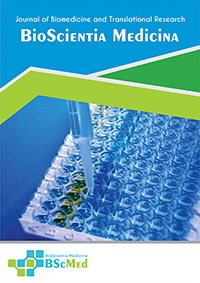Main Article Content
Abstract
Background: The globalization of colored powder festivals, such as Holi, has exposed millions, including international tourists, to significant ocular health risks from synthetic industrial dyes that have replaced traditional organic powders. This study was conducted to quantify the prevalence of acute ocular morbidities from these festivals, providing an evidence base to inform clinical practice and public health policy, particularly within travel medicine.
Methods: Following PRISMA guidelines, a systematic search was conducted in PubMed, Google Scholar, ScienceDirect, and ProQuest for observational studies published up to July 2024. Studies reporting ocular complications from colored powder exposure were included. Data were extracted by two independent reviewers, and methodological quality was assessed using JBI checklists. A random-effects model was used to calculate pooled prevalence for key ocular injuries. Heterogeneity was investigated using sensitivity analyses, and publication bias was assessed with funnel plots.
Results: Six studies from India, encompassing 189 patients, met the inclusion criteria for quantitative analysis. The patient population was predominantly young males (mean age 20-30 years). The meta-analysis revealed a high pooled prevalence of key ocular morbidities. The prevalence for chemical conjunctivitis was 95% (95% CI: 87%-100%), though with substantial but anticipated heterogeneity (I²=82%). The prevalence for corneal epithelial defects was 37% (95% CI: 23%-53%; I²=45%), and for superficial punctate keratopathy was 75% (95% CI: 57%-90%; I²=0%). Most injuries were bilateral.
Conclusion: Participation in colored powder festivals, based on extensive evidence from Holi in India, presents a quantifiable and significant risk of acute ocular morbidity. The high prevalence of chemical-induced ocular surface disease necessitates urgent recognition of this "hidden hazard." Proactive, evidence-based preventive strategies, including tiered recommendations for protective eyewear and updated pre-travel health advisories, are imperative to safeguard the vision of millions of celebrants worldwide.
Keywords
Article Details
As our aim is to disseminate original research article, hence the publishing right is a necessary one. The publishing right is needed in order to reach the agreement between the author and publisher. As the journal is fully open access, the authors will sign an exclusive license agreement.
The authors have the right to:
- Share their article in the same ways permitted to third parties under the relevant user license.
- Retain copyright, patent, trademark and other intellectual property rights including research data.
- Proper attribution and credit for the published work.
For the open access article, the publisher is granted to the following right.
- The non-exclusive right to publish the article and grant right to others.
- For the published article, the publisher applied for the Creative Commons Attribution-NonCommercial-ShareAlike 4.0 International License.





